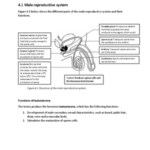Understanding the Distinct Paths: Environmental Science vs. Environmental Studies

Introduction
In an era marked by climate change, ecosystem loss, and the urgent need for sustainability, two academic fields have emerged to address these challenges: environmental science and environmental studies. While their names are often used interchangeably, they represent distinct approaches to understanding and solving environmental problems. Knowing the differences between these fields is crucial for students, professionals, and anyone interested in making an impact in environmental sectors. This article provides a comprehensive examination of both disciplines, including detailed explanations, real-world examples, career guidance, and actionable steps to pursue educational and professional opportunities.
Defining Environmental Science and Environmental Studies
Environmental science is an interdisciplinary, science-based field that draws on biology, chemistry, geology, physics, and mathematics to study the natural environment and the impact of human activity. Its primary focus is on analyzing natural systems, collecting quantitative data, and applying scientific methods to address environmental challenges. Environmental science is rooted in objectivity and seeks to uncover factual causes and measurable solutions to environmental problems [1] [2] .

Source: jgu.edu.in
In contrast, environmental studies is an interdisciplinary field based in the social sciences and humanities. It explores the complex relationships between humans and their environment, focusing on issues such as policy, ethics, culture, society, and economics. Environmental studies emphasizes qualitative analysis, contextual understanding, and critical thinking about the human dimensions of environmental issues [1] [2] .
Key Differences: Methods, Focus, and Applications
The main distinctions between environmental science and environmental studies can be summarized in their approach, focus, and practical applications:
- Approach: Environmental science uses quantitative, objective research methods and focuses on empirical data. Environmental studies employs qualitative, subjective approaches, often incorporating ethical, historical, and cultural perspectives [1] .
- Focus: Environmental science addresses the physical and biological aspects of environmental problems, such as pollution, ecosystem dynamics, and climate change. Environmental studies centers on the social, political, and cultural dimensions, such as policy-making, advocacy, and environmental justice [2] .
- Applications: Graduates of environmental science often work in laboratories, research institutions, government agencies, or engineering firms, engaging in data collection, analysis, and implementation of technological solutions. Environmental studies graduates may pursue careers in policy, education, advocacy, sustainable business, and community engagement [3] .
Curriculum and Educational Pathways
The curriculum for each field reflects its respective focus:
Environmental Science: Students typically take courses in biology, chemistry, physics, ecology, geology, and mathematics. Laboratory work, field research, and technical training are central components. For example, a student might conduct water quality testing, analyze soil samples, or model climate systems [5] .
Environmental Studies: Coursework usually covers environmental policy, ethics, law, economics, cultural studies, and communication. Students engage in critical analysis of environmental issues, participate in debates, and may complete internships with NGOs, government agencies, or community organizations [2] .
Career Opportunities and Real-World Examples
Both fields offer diverse career paths, but the nature of these roles varies based on the skills and knowledge acquired:
Environmental Science Careers: Professionals may work as environmental scientists, ecologists, resource managers, environmental engineers, or in roles related to pollution control, climate analysis, and conservation. Typical job settings include laboratories, consulting firms, government agencies such as the Environmental Protection Agency (EPA), and research institutions. For instance, an environmental scientist might design a field study to monitor the effects of industrial runoff on a river ecosystem or develop new technologies for pollution abatement [3] .
Environmental Studies Careers: Graduates may become policy analysts, sustainability coordinators, environmental educators, community organizers, or work in advocacy and non-profit sectors. They might lead campaigns for environmental justice, design community-based sustainability initiatives, or advise businesses on eco-friendly practices. For example, an environmental studies professional could facilitate stakeholder meetings to develop a local green infrastructure plan or evaluate the social impacts of proposed environmental legislation [2] .

Source: grace.edu
How to Choose the Right Path: Practical Steps
Choosing between environmental science and environmental studies depends on your interests, strengths, and career goals. Here are step-by-step recommendations to help you decide:
- Assess Your Strengths and Interests: If you enjoy laboratory work, data analysis, and technical problem-solving, environmental science may be the better fit. If you are drawn to social change, policy, or ethical debates, environmental studies could be more suitable.
- Research Academic Programs: Review the curriculum and degree requirements of universities you are interested in. Many institutions provide detailed course descriptions online. If you need guidance, you can contact the admissions office or academic advisors at specific universities.
- Explore Career Outcomes: Visit reputable career websites such as the U.S. Bureau of Labor Statistics (BLS) for information on job outlooks, salary ranges, and required qualifications for roles in both fields. You can search for terms like “environmental scientist” or “environmental policy analyst” on the official BLS website for current data.
- Consider Further Education: Some advanced positions, such as sustainability director or university professor, may require a master’s or doctoral degree. Many universities offer graduate programs in both environmental science and environmental studies. Review application requirements and consider reaching out to departments for more information.
- Seek Experiential Opportunities: Internships, volunteer positions, and research assistantships are valuable for gaining real-world experience and clarifying your interests. Many government agencies, non-profits, and private firms offer such opportunities. Use search terms like “environmental science internships” or “environmental policy fellowships” to find openings.
Potential Challenges and Solutions
Both fields come with challenges. Environmental science students may find advanced math and technical coursework demanding, while environmental studies students might face difficulties in translating qualitative research into measurable policy recommendations. To overcome these challenges, consider:
- Taking interdisciplinary electives to broaden your skill set.
- Joining student organizations or professional societies for networking and support.
- Seeking mentorship from faculty or industry professionals.
Alternative Approaches and Combined Pathways
Some universities offer hybrid programs or allow students to combine coursework from both environmental science and environmental studies, resulting in a more comprehensive understanding of environmental issues. This multidisciplinary training can enhance career flexibility and open up roles in research, policy, education, and advocacy. If a combined program interests you, search for “interdisciplinary environmental programs” or contact universities to inquire about dual-degree or customizable study options.
How to Access Educational Programs and Professional Opportunities
To apply for environmental science or environmental studies programs:
- Research accredited universities with strong reputations in environmental fields. Many institutions provide detailed program descriptions and admission requirements on their official websites.
- Prepare your application documents, which typically include transcripts, test scores, letters of recommendation, a personal statement, and a resume or CV.
- Contact the admissions office for guidance on deadlines and specific requirements. For graduate programs, reach out to faculty members whose research aligns with your interests.
- Inquire about financial aid, scholarships, or assistantships through the university’s financial aid office or scholarship portal.
For career opportunities, you can:
- Visit reputable job boards such as USAJobs.gov (for federal positions), Indeed, or LinkedIn.
- Reach out to professional organizations like the National Association of Environmental Professionals (NAEP) or the Society for Conservation Biology for networking and job listings.
- Consult the career services office at your university for personalized guidance and opportunities.
Key Takeaways
- Environmental science is science-driven, focusing on objective analysis and technical solutions to environmental challenges.
- Environmental studies emphasizes human-environment relationships, exploring policy, ethics, and culture through a qualitative lens.
- Each field offers distinct, rewarding career paths, and both are essential for advancing sustainability and environmental protection.
- Choosing the right path involves self-assessment, research, and experiential learning.
References
- [1] JGU (2024). Difference Between Environmental Science and Environmental Studies.
- [2] Loyola Marymount University. Environmental Science vs. Environmental Studies.
- [3] Unity Environmental University (2023). How Environmental Studies Vs Environmental Science Differ.
- [4] University of San Diego. Environmental Science vs. Studies: Which Is Right for You?






